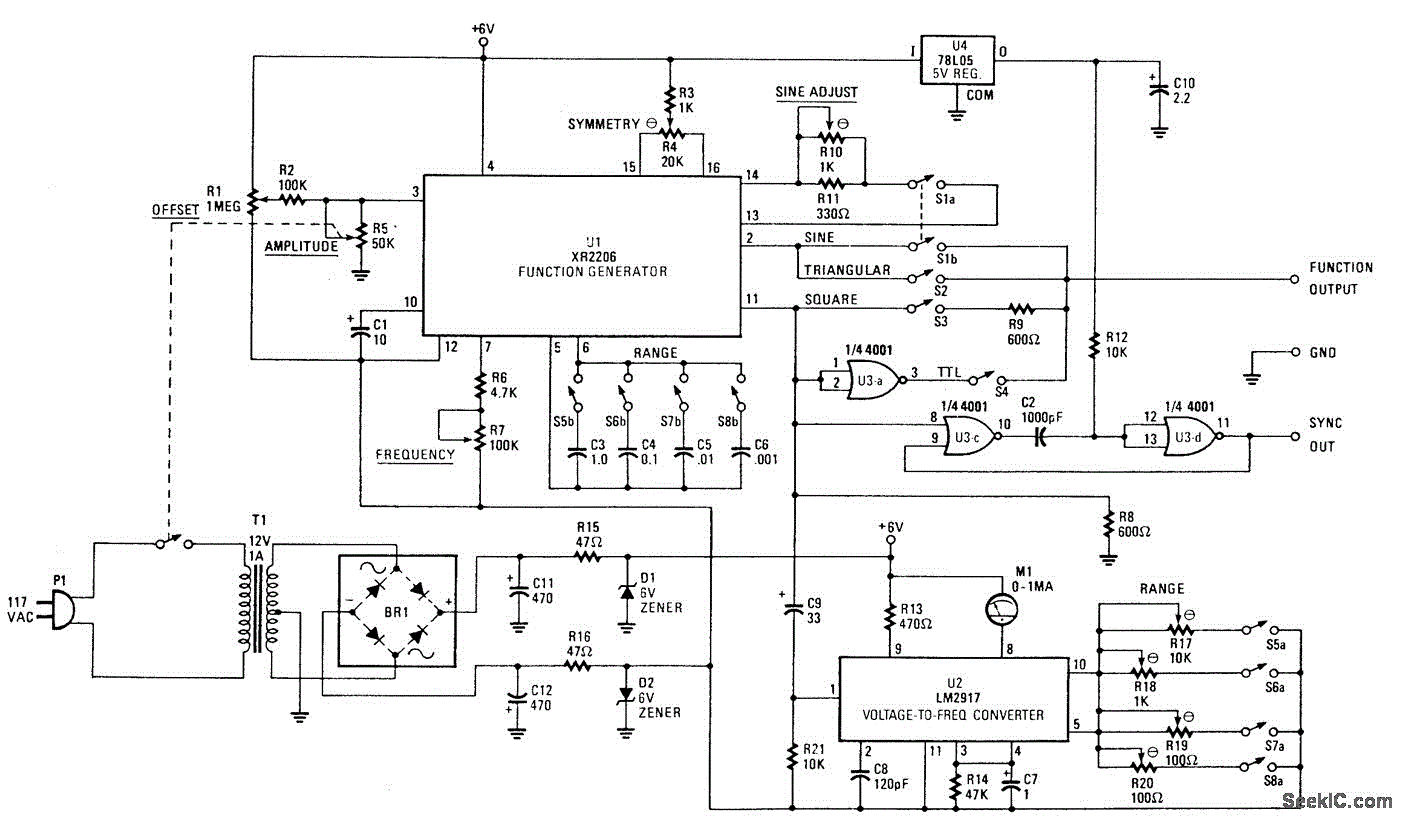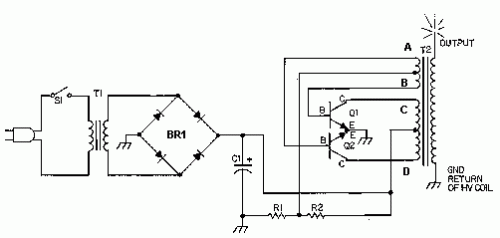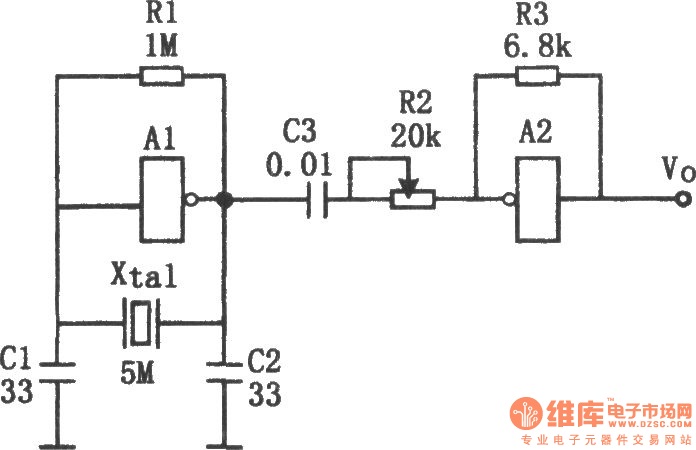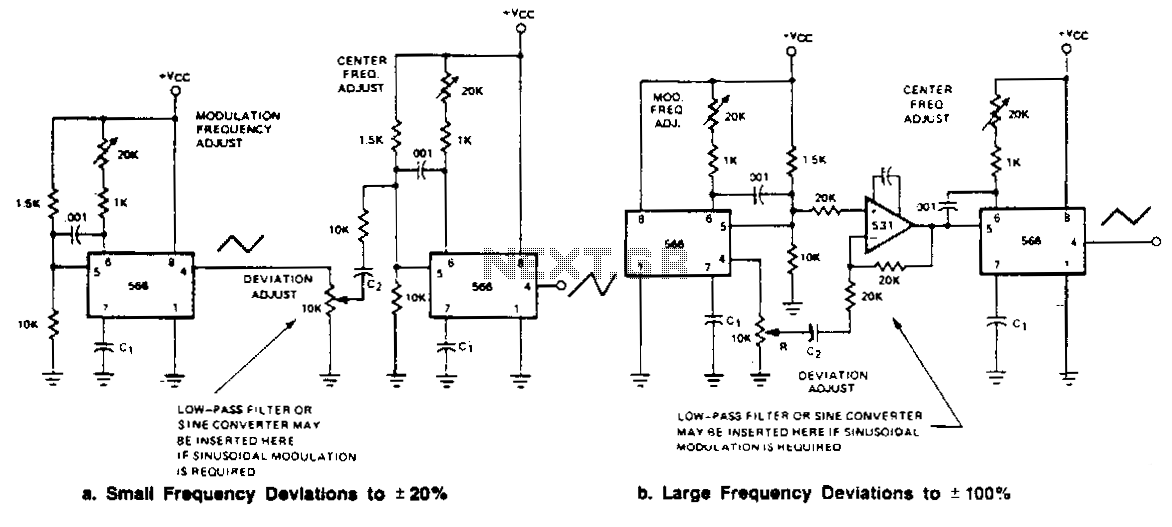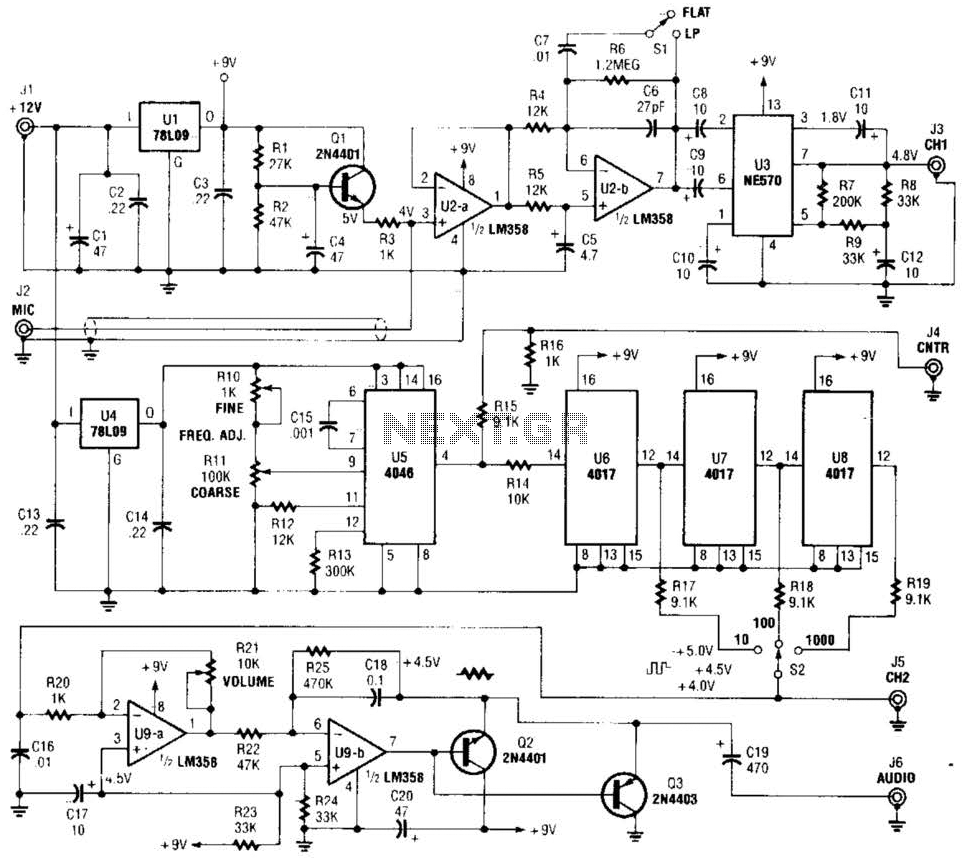
Cricket Generator by 2N4891
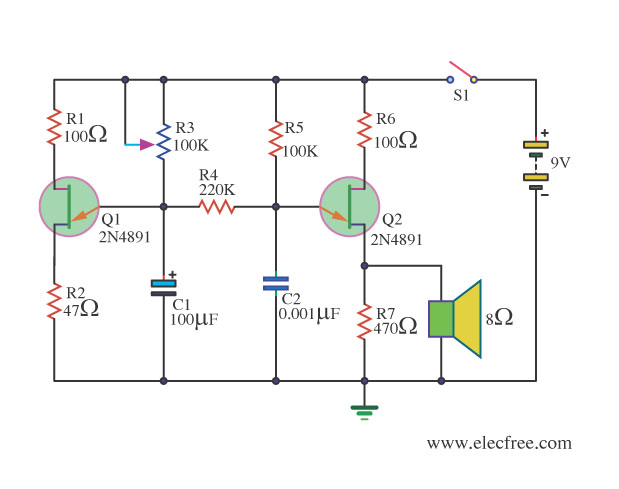
This circuit produces sound that interestingly modifies the occurrence rate of a cricket-like sound. The values of components R3, C1, R5, and C2 should be adjusted accordingly.
The circuit design utilizes a combination of resistors and capacitors to create a sound generator that emulates the chirping of crickets. The primary components involved in this circuit are R3, C1, R5, and C2, each playing a crucial role in determining the frequency and modulation of the sound output.
Resistor R3 functions as a variable resistor, allowing for the adjustment of the circuit's resistance and thereby influencing the overall frequency of the sound produced. The capacitor C1 works in conjunction with R3 to set the timing characteristics of the oscillation. By altering the capacitance of C1, the time constant of the RC network can be modified, resulting in changes to the pitch and rhythm of the chirping sound.
Resistor R5 and capacitor C2 are also integral to the circuit's performance. R5 can be used to fine-tune the amplitude of the sound output, while C2 may serve to filter or smooth the signal, reducing unwanted noise and ensuring a clear sound reproduction.
To achieve the desired sound modulation, careful calculations and adjustments of these components are necessary. The interaction between the resistors and capacitors creates a unique sound signature, allowing for a wide range of cricket-like chirps. This circuit can be integrated into various applications, such as sound effects in toys or as part of a nature simulation device, providing an engaging auditory experience.This circuit gives sound handful that modifies interestedly, occurrence sound rate cricket Fixed. By R3 should experience change the value C1,R5 and C2.. 🔗 External reference
The circuit design utilizes a combination of resistors and capacitors to create a sound generator that emulates the chirping of crickets. The primary components involved in this circuit are R3, C1, R5, and C2, each playing a crucial role in determining the frequency and modulation of the sound output.
Resistor R3 functions as a variable resistor, allowing for the adjustment of the circuit's resistance and thereby influencing the overall frequency of the sound produced. The capacitor C1 works in conjunction with R3 to set the timing characteristics of the oscillation. By altering the capacitance of C1, the time constant of the RC network can be modified, resulting in changes to the pitch and rhythm of the chirping sound.
Resistor R5 and capacitor C2 are also integral to the circuit's performance. R5 can be used to fine-tune the amplitude of the sound output, while C2 may serve to filter or smooth the signal, reducing unwanted noise and ensuring a clear sound reproduction.
To achieve the desired sound modulation, careful calculations and adjustments of these components are necessary. The interaction between the resistors and capacitors creates a unique sound signature, allowing for a wide range of cricket-like chirps. This circuit can be integrated into various applications, such as sound effects in toys or as part of a nature simulation device, providing an engaging auditory experience.This circuit gives sound handful that modifies interestedly, occurrence sound rate cricket Fixed. By R3 should experience change the value C1,R5 and C2.. 🔗 External reference

